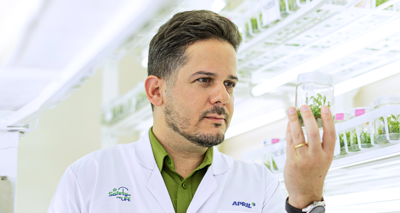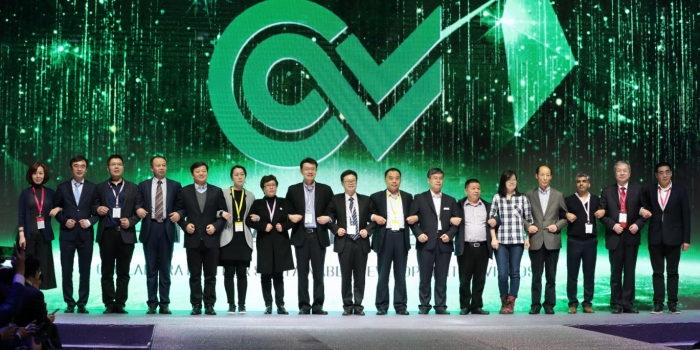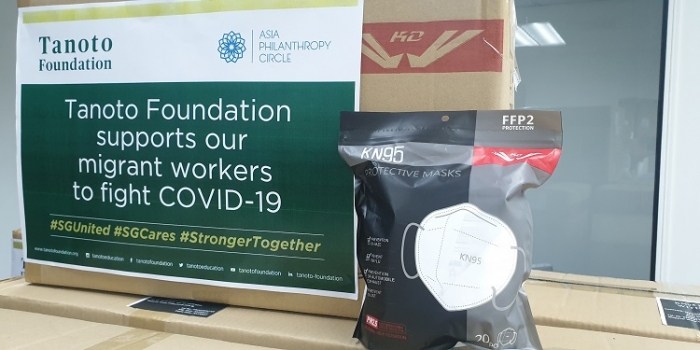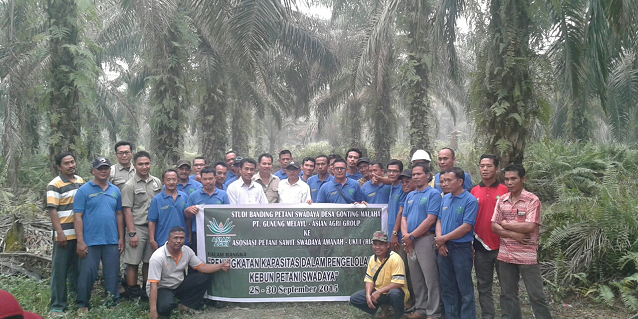Forestry has always been a game of patience and long-term vision, shaped by the careful management of resources that take years, even decades, to mature. For Gustavo Martins, APRIL Group’s Tree Improvement Head, the appeal of forestry lies precisely in these challenges.
Born into a family rooted in agriculture in Brazil, Gustavo developed an early fascination with the outdoors.
“My family has roots to agriculture. My grandfather was a rancher. My father is an agronomist. I always grew up in this environment,” he shares.
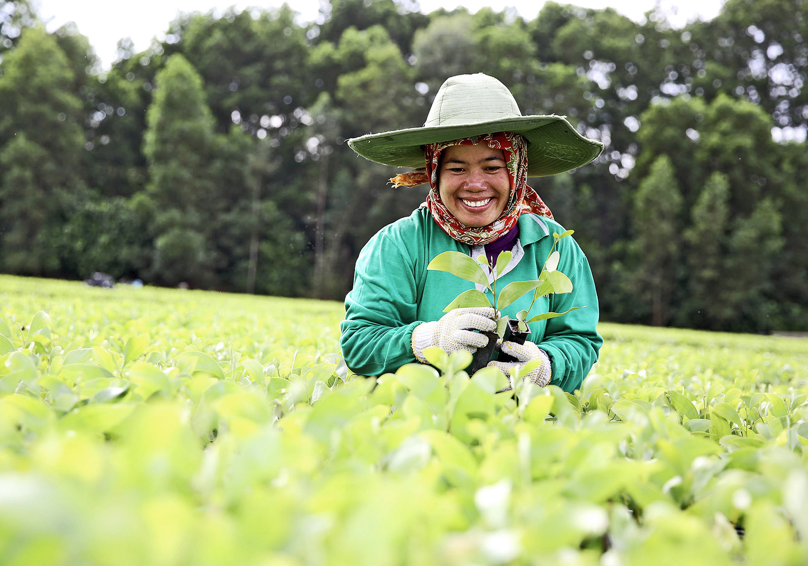
APRIL harnesses naturally occurring genetic variations through selective breeding practices.
“Forests are even more challenging because of the long cycles and exciting because they’re big living beings,” Gustavo explains.
His interest grew stronger during graduate school, where tree improvement offered him the perfect intersection of biology, statistical analysis, and practical outcomes. Today, that deep engagement is directly contributing to APRIL2030, the company’s ambitious sustainability strategy which aims for a 50 per cent increase in fibre productivity without expanding its plantation footprint. APRIL has already achieved a 12 per cent productivity gain, and Gustavo’s work is central to continuing this progress.
For him, the journey of improvement is endless: “It’s a never-ending journey. Every day there’s a new discovery…that’s quite exciting.”
Improving Forest Productivity Through Traditional Breeding
At APRIL, Gustavo leads tree improvement initiatives using traditional breeding techniques designed to enhance growth rates and the resilience of commercial tree species. He emphasises that APRIL does not rely on genetically modified trees but instead harnesses naturally occurring genetic variations through selective breeding practices.
“We introduce natural variation from these species, fine-tuning genetics from the natural variability,” Gustavo notes.
His team primarily focuses on acacia and eucalyptus, species well suited to APRIL’s tropical plantation environments due to their fast growth and inherent resistance to pests and diseases. To ensure reliable performance, Gustavo explains that each promising tree clone is rigorously tested under various conditions, observing how they respond over time.
“We have a well-defined research programme. We do clonal testing in different environments and verify how they perform under those site conditions,” he explains.
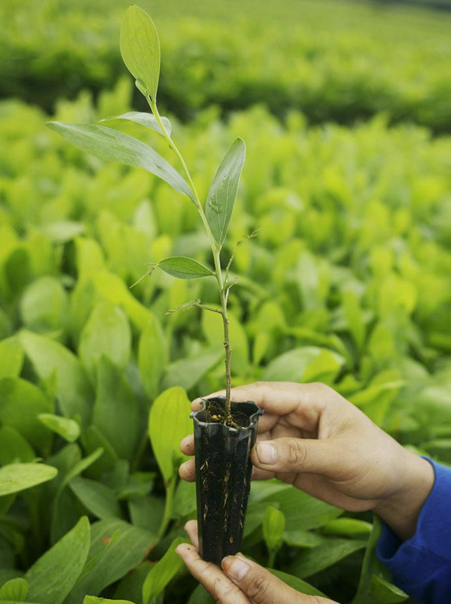
Gustavo’s team researches acacia and eucalyptus, species well suited to APRIL’s tropical environments.
Harnessing Data to Guide Better Forestry Management
The secret behind APRIL’s robust plantation operations lies partly in the comprehensive data-driven approach Gustavo oversees. APRIL’s forestry R&D team includes over 200 specialists from diverse fields such as genetics, plant health, nutrition, and silviculture, who together manage vast datasets to support strategic decision-making.
A particularly impactful innovation is the company’s use of remote sensing technologies, allowing teams to monitor vast forested areas in a way previously impossible.
“Remote sensing was really a game changer because we can cover and monitor the forest in a larger scale that was not possible before,” Gustavo highlights.
The team integrates detailed maps of soil texture and fertility to strategically match specific tree clones to the most suitable planting sites. This careful approach ensures that trees thrive despite challenges like climate variability and environmental stresses.
From Insight to Impact: Caring for Soil and Feeding Forests
For Gustavo, the health of APRIL’s plantations starts from the ground up. Each plantation site is viewed as a long-term investment designed to yield productivity not just once, but across multiple planting cycles.
“Our land works double duty. It needs to boost productivity but simultaneously protect the environment,” he emphasises.
APRIL’s meticulous approach ensures every tree receives precisely tailored nutrition, applying macronutrients such as nitrogen, potassium, and calcium, alongside essential micronutrients like magnesium, zinc, and boron. The carefully balanced nutrient programme protects long-term soil health and sustains productivity.
This practice also helps APRIL achieve its broader sustainability goals. Gustavo draws a clear link between productivity and climate mitigation, noting that healthier, faster-growing trees capture more carbon from the atmosphere.
“A more productive forest is absorbing more carbon from the air,” he explains.
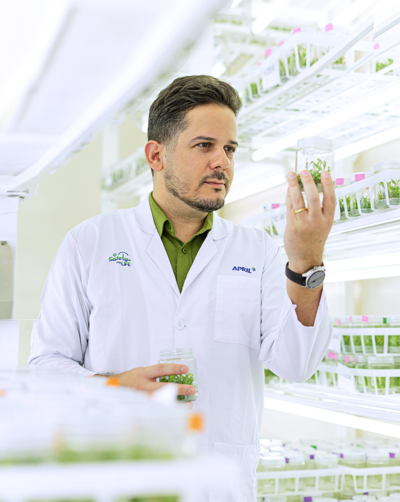
Gustavo oversees APRIL’s forestry R&D team which includes over 200 specialists from diverse fields.
Partnerships Powering Forestry Innovation
Gustavo firmly believes that addressing forestry challenges cannot be done by APRIL alone. Instead, the company relies on robust partnerships with global research institutions and universities to expand its capabilities.
“We have collaborative projects and partnerships; it’s a multi-disciplinary approach,” Gustavo explains.
Notably, APRIL collaborates closely with North Carolina State University through initiatives like CAMCORE and the Plant Sciences Initiative, leveraging their expertise in genetic research and forest management practices. Additionally, APRIL partners with Pretoria University’s FABI institute, further strengthening its capabilities in plant health and pest management.
“These partnerships exemplify our commitment to integrating academic excellence with our practical science-based solutions,” he says.
Gustavo believes that partnerships are critical because forestry’s complexity requires collaboration between diverse fields, from biotechnology and genetics to data science. Solving complex issues like climate change and resource management demands collective, interdisciplinary action.
Rethinking the Role of Planted Forests
Gustavo sees a common misunderstanding about the role planted forests play in the environment. While consumers increasingly demand sustainability, they also continue to require materials derived from forestry.
“Everyday people want to consume more and more. How do we achieve both at the same time? There’s no other way if we don’t use technology and science,” he explains.
Planted forests, he stresses, are essential because they help meet fibre demand without placing additional pressure on natural forests. Gustavo highlights APRIL’s one-to-one conservation policy, which pairs every hectare of planted forest with an equal area conserved as natural habitat.
His global forestry experience across Brazil, Indonesia, and the United States underscores a universal misconception about commercial forestry, that economic production and environmental protection cannot coexist. Gustavo argues passionately against this view, insisting that sustainability can and should be an integral part of commercial forestry practices worldwide.
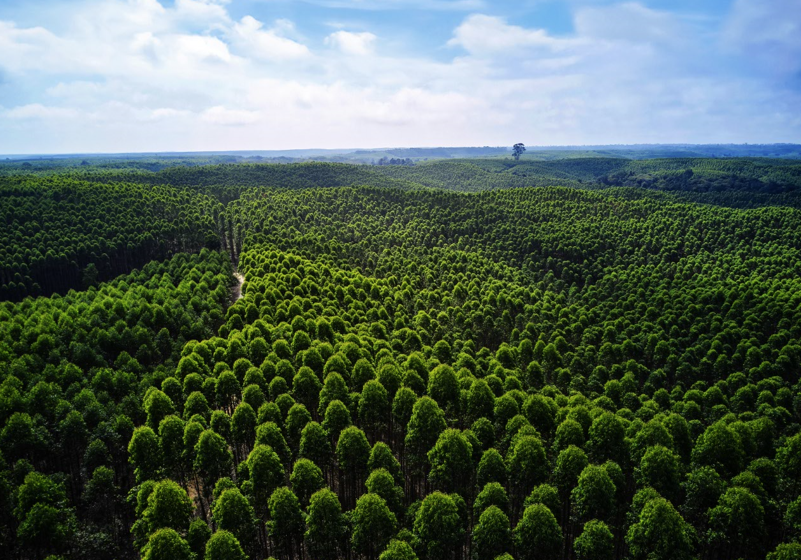
Planted forests help meet fibre demand without placing additional pressure on natural forests.
Building Progress Over Time
Reflecting on his nine-year tenure at APRIL, Gustavo highlights tangible gains already made through the company’s genetic improvement programme.
“We already verified a significant improvement in our forest productivity. Our approach has been working,” he states.
But he sees these improvements as part of a longer continuum rather than isolated victories. Sustainable forestry, for Gustavo, comes from continuous, incremental improvement rather than dramatic overhauls.
“What we do today should be better than what we did yesterday, and what we do tomorrow should be better than what we do today,” he says, underscoring his long-term vision for progress.
Looking ahead, Gustavo sees further potential in the integration of artificial intelligence and automation. With improved access to high-quality data, APRIL’s forestry management can become more agile, responding faster and smarter to changing environmental conditions.
“Artificial intelligence, it’s definitely going to change the way we do things in the next five years,” Gustavo concludes, confidently pointing toward a future where innovation, sustainability, and productivity align seamlessly.
Learn more about APRIL’s research and development programmes here.



